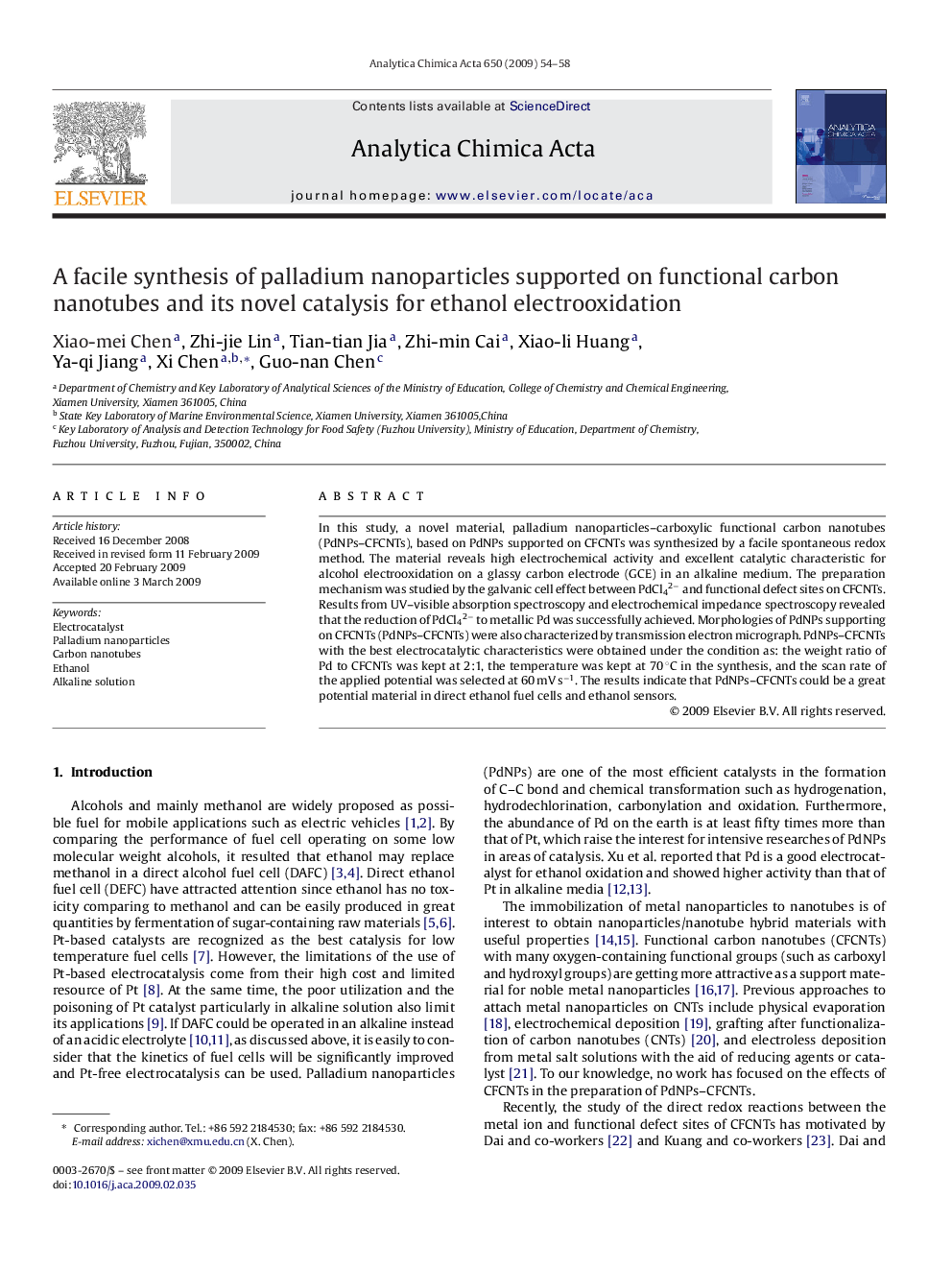| Article ID | Journal | Published Year | Pages | File Type |
|---|---|---|---|---|
| 1168406 | Analytica Chimica Acta | 2009 | 5 Pages |
In this study, a novel material, palladium nanoparticles–carboxylic functional carbon nanotubes (PdNPs–CFCNTs), based on PdNPs supported on CFCNTs was synthesized by a facile spontaneous redox method. The material reveals high electrochemical activity and excellent catalytic characteristic for alcohol electrooxidation on a glassy carbon electrode (GCE) in an alkaline medium. The preparation mechanism was studied by the galvanic cell effect between PdCl42− and functional defect sites on CFCNTs. Results from UV–visible absorption spectroscopy and electrochemical impedance spectroscopy revealed that the reduction of PdCl42− to metallic Pd was successfully achieved. Morphologies of PdNPs supporting on CFCNTs (PdNPs–CFCNTs) were also characterized by transmission electron micrograph. PdNPs–CFCNTs with the best electrocatalytic characteristics were obtained under the condition as: the weight ratio of Pd to CFCNTs was kept at 2:1, the temperature was kept at 70 °C in the synthesis, and the scan rate of the applied potential was selected at 60 mV s−1. The results indicate that PdNPs–CFCNTs could be a great potential material in direct ethanol fuel cells and ethanol sensors.
